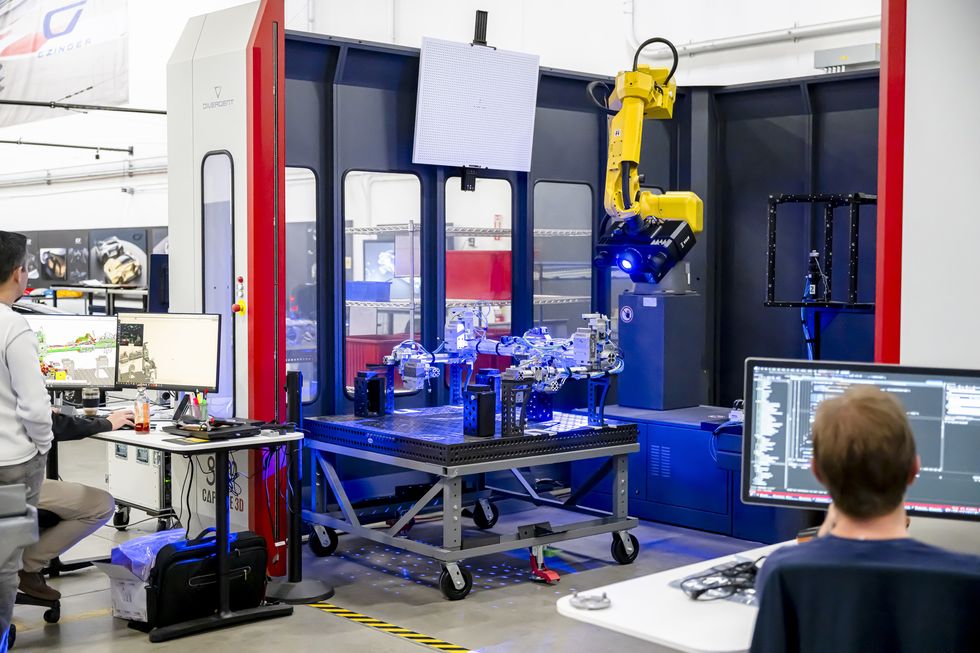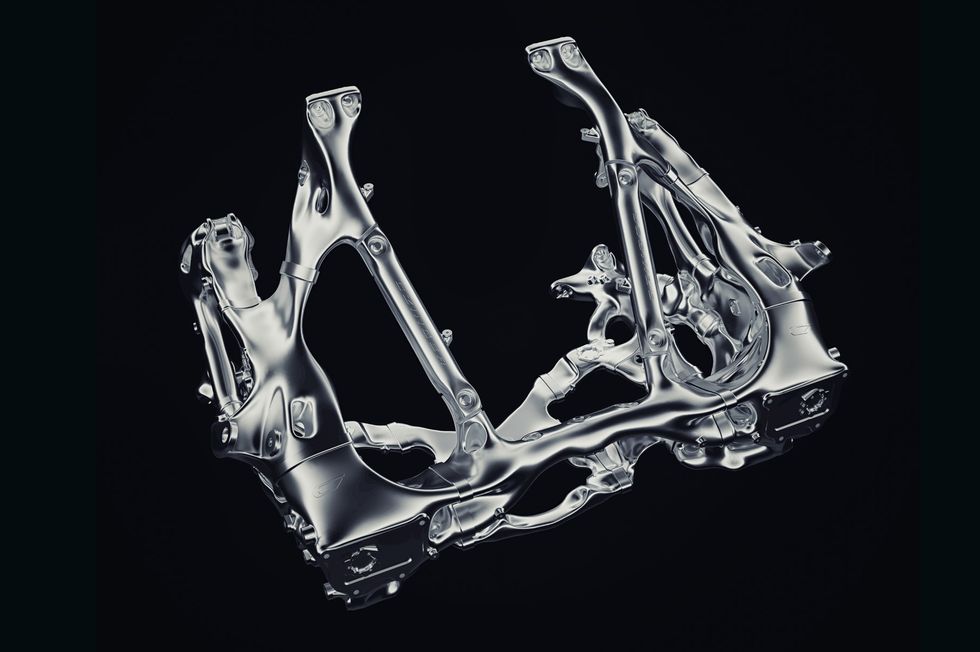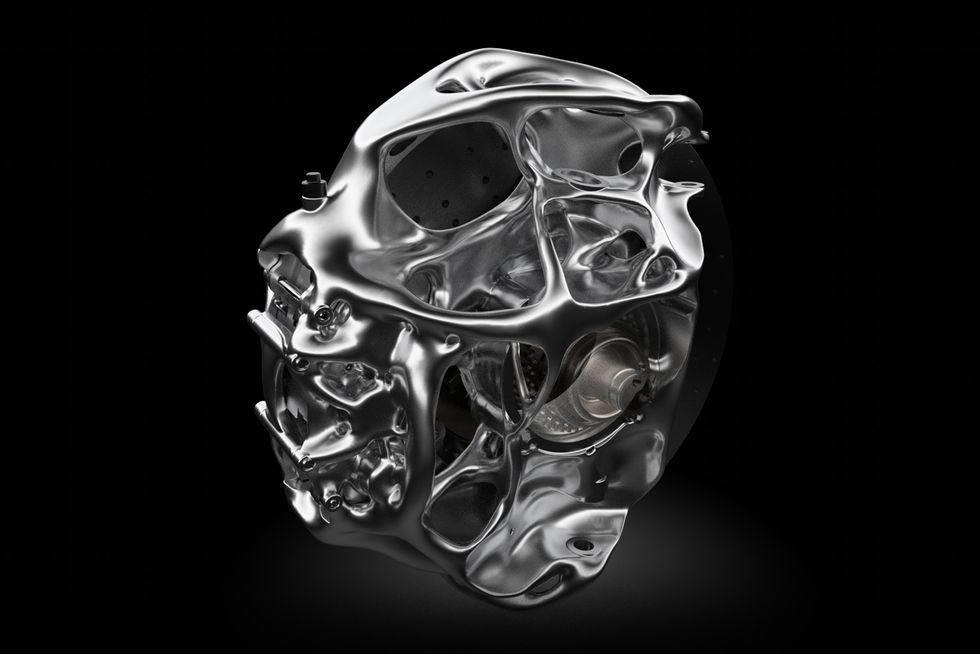A Look Deep into the Czinger 21C Hypercar

From the September 2023 issue of Car and Driver.
There’s usually a trade-off between the cost of the machinery a manufacturer employs to make a part and the cost of producing the part itself. Companies can invest millions in expensive machinery to scale quickly and lower production costs, or they can save capital by investing in less pricey, but more time- and labor-intensive, tooling that makes it harder to produce parts en masse and at low cost.
Czinger Vehicles believes 3-D printing offers an alternative to this causal relationship. The nascent California-based automaker is putting its money where its mouth is by employing this production method on its 21C hypercar.
James Lipman|Car and Driver
To 3-D print a Czinger involves a process called powder-bed fusion with selective laser melting. You start with a surface that’s covered with powdered metal, then hit it with laser beams to fuse the powdered particles together to form a layer of metal into a pre determined shape. Czinger repeats this over and over, with an additional layer of metal fusing to the layer before it, until the part emerges.
Using 3-D printing allows Czinger to design and produce components that are lighter but no weaker than those built by other construction methods, according to the hypercar maker.
“We’re designing these parts using a new form of computer-aided design,” says Lukas Czinger, the chief operating officer and co-founder of Czinger. “We provide the size and load parameters and let the software create the part.”

Various alloys of aluminum make up most of the automaker’s 3-D-printed parts. Czinger uses proprietary powders to maximize strength, promote fusion, and minimize soot during the printing process.
James Lipman|Car and Driver
Plus, with no defined molds or presses, updating a part’s design is quick and easy. “And there’s no cost penalty for making a change,” says Ewan Baldry, chief engineer.
According to Baldry, the largest 3-D-printed part Czinger currently produces is the 21C’s transmission housing, which pushes the limits of the maximum 20-inch cube the automaker’s 3-D printer can spit out. Going wider would require a larger powder bed, but Czinger has optimized its machinery for quick and accurate printing.

The rear subframe resembles some sort of mechanical skeleton.
Czinger|Car and Driver
“We use a dozen one-kilowatt lasers that operate simultaneously to build parts 80 to 100 microns [0.003 to 0.004 inch] at a time,” Czinger says. Building a 20-inch-tall part requires some 5000 layers.
Though 3-D printing takes time, it’s no longer the lengthy task it once was. “Five years ago, our process could only fuse 15 to 20 milliliters of material per hour,” Czinger says. “Today we’re doing 300.”
Czinger expects printing speeds to continue to increase. He anticipates that the company will soon be able to economically produce hundreds of thousands of 3-D-printed parts each year.

The upright, with the integral brake caliper is more like a robotic wasp nest. The design process uses artificial intelligence to create these organic shapes, and 3-D printing puts material exactly where it is needed.
Czinger
Not many 29-year-olds can put “co-founder of a hypercar company” on their résumé. Lukas Czinger can, though.

Contributing Editor
Csaba Csere joined Car and Driver in 1980 and never really left. After serving as Technical Editor and Director, he was Editor-in-Chief from 1993 until his retirement from active duty in 2008. He continues to dabble in automotive journalism and LeMons racing, as well as ministering to his 1965 Jaguar E-type, 2017 Porsche 911, and trio of motorcycles—when not skiing or hiking near his home in Colorado.

Senior Editor, Features
Like a sleeper agent activated late in the game, Elana Scherr didn’t know her calling at a young age. Like many girls, she planned to be a vet-astronaut-artist, and came closest to that last one by attending UCLA art school. She painted images of cars, but did not own one. Elana reluctantly got a driver’s license at age 21 and discovered that she not only loved cars and wanted to drive them, but that other people loved cars and wanted to read about them, which meant somebody had to write about them. Since receiving activation codes, Elana has written for numerous car magazines and websites, covering classics, car culture, technology, motorsports, and new-car reviews.







